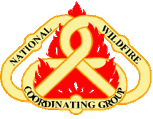Background Information:
The IHC arrived on the Klondike Fire on Saturday, September 1st. The fire had recently been taken over by the Southern Area Red Team. The crew was assigned to DIV PP. There was a large series of indirect lines that encompassed the fire and it was apparent upon arrival that the main fire was miles away from the indirect portions of DIV PP. The initial plan upon arrival was to wait the fire out to see if it would come close enough to the indirect line to justify a large scale firing operation. The area was heavily scarred from the Biscuit Fire in 2002. A firing plan between all divisions was put in place to burn the 35-40 miles of indirect line if necessary. The crew was spiked out during the first week of the incident and would get briefed from the DIVS when he arrived on scene in the morning.
Incident:
The crew was at Spike Camp the morning of Sept. 5th awaiting the arrival of the DIVS for a briefing on the plan for the day. Another IHC informed the crew that the plan for the shift was to burn a line in DIV PP between two drop points. This was confirmed by the DIVS (t) when he arrived on scene. There was a timber stringer that ran all the way to the top of the ridge and burning between the two drop points would eliminate the possibility of fire that was down below from making a run up to the ridge. The entire back side of the ridge was an old burn scar that burned extremely hot during the Biscuit fire. The fire had been down in the Collier Creek drainage for multiple days and had showed no signs of wanting to move out of the drainage towards the ridgeline. The line that was to be burned had been scouted by the crew during the previous shift and it was determined that there was at least a shift and a half of prep needed due to heavy snag loading along the line. Work began first thing the morning of 9/5 to eliminate the snags with potential to impact the line. The crew informed DIV PP (t) this mission would not be completed until the following morning (9/6) and both parties agreed that the crew would conduct firing operations on 9/6. Conditions forecasted for 9/6 were favorable and the fire activity was not forcing a firing operation on 9/5. By mid afternoon, the OPSC began contacting DIV PP (t) on command regarding the status of the firing operation. DIV PP (t) informed OPSC that there was still prep needed along the line prior to initiating any firing. Shortly after, DIV PP (t) met with the crew and stated that the IMT wanted the line to be burned during that operational period. The crew informed DIV PP (t) that they would not put any fire on the ground until the snags along the line had been mitigated due to safety concerns regarding resources holding the line during/after firing operations. The OPSC contacted DIV PP (t) multiple times throughout the following hour regarding whether or not fire had been put on the ground. The OPSC also stated that they had other crews available to complete the mission. OPSC then contacted the Branch Director (who was en route to tie in with the crew and DIV PP) and told him that he should probably bring a drip torch up to the drop point with him. Upon talking with the Branch Director, it was agreed that the crew would conduct a test fire on top of the peak to help alleviate the pressure to fire the line that was being pushed down onto the crew. The crew conducted a test fire at the top of Game Peak and left the line a few hours later. The firing operation was successfully completed the following shift (9/6) after the crew had completed the snagging operation.
Summary:
An enormous amount of pressure was put upon the crew to complete the firing operation when there were no fire line factors forcing the crew to burn the line on 9/5. Multiple comments were made by the OPSC on the command frequency that were extremely unprofessional and put the crew in a very uncomfortable position. The crew didn’t have any opposition with firing the line, the only request made was to wait until the hazards had been mitigated prior to firing. It also became clear that this type of pressure was occurring on other divisions around the fire.
It was apparent that the IMT was receiving pressure from the agency to accomplish certain missions around the fire. Instead of absorbing the pressure and allowing the resources on the ground to complete the missions safely, the IMT was pushing that pressure down to the resources on the ground. The crew handled this situation in a very professional manner, which is why the compromise was made with the Branch Director to conduct a test fire on 9/5 and complete the firing operation on 9/6. The concern with what occurred on 9/5 is the possibility of another resource being in that situation and being pressured to conduct firing operations on a line that was unsafe to fire. If the line had been burned during that shift, the chances of a person and/or vehicle being struck by a snag afterwards were high. |



